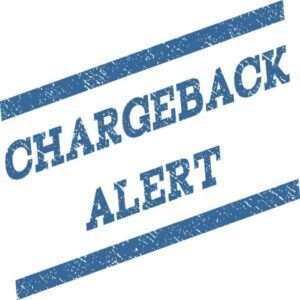How Do Merchants Avoid Fraud and Chargebacks?

Unfortunately, chargebacks are a costly and unfortunate part of running a business for merchants who accept credit cards. With more transactions moving online and card issuers eager to keep their cardholders happy, chargebacks are on the rise.
According to Chargebacks911, reducing fraud and chargebacks requires vigilance. Even if there is no silver bullet for merchants to stop it from happening, there are strategies businesses can use to minimize the risk associated with it. Merchants should always collect as much data as possible at the time of purchase, whether it is a face-to-face or card-not-present transaction, to dispute the chargeback.
The following tips are intended to help merchants avoid being the victim of fraud and avoid chargebacks when conducting transactions.
Prevention Tips for Face-to-Face Transactions
- Great Customer Service – The #1 way to prevent chargebacks is to provide great customer service, especially when a customer is unhappy about a product or service. Customers will likely dispute the charge with the business directly and solving the customer issue is a merchant’s best line of defense against chargebacks.
- Respond to Retrieval Notices – Retrieval notices are what banks and card issuers send to merchants when filing a chargeback. The notice includes information about the disputed transaction. If merchants fail to respond within the allotted time allowed, the bank will process the chargeback.
- Never Accept an Expired Card – Ask for a driver’s license on every transaction and compare it to the name and signature on the card.
- Use the EMV Chip – The EMV-chip card acceptance should be used on every transaction unless it is not possible. In that instance, swipe the card instead to help prevent fraud.
- Use Address Verification Services (AVS) – Typically, a merchant services provider can set a terminal to ask for AVS, which prompts the request for address and zip code at the time of transaction. This can provide further evidence in the case of a chargeback.
- State Clear Terms – This can prevent customers from disputing transactions for products they feel were unfairly marketed to them, or services they feel were not delivered as described.
- Follow the Card Brands’ Terms of Service – Any compliance violation can cause a merchant to lose its chargeback ability.
- Do Not Proceed with a Transaction that States a “Do Not Honor” or “Decline” Message – DO NOT try again for an authorization; there is no protection for a transaction after a merchant receives this message, even if the merchant obtains an approval code on a second attempt.
- Compare the Signature – Compare the signature on the sales draft to the back of the card. The card must be signed. If the card is not signed, have the customer sign the card in front of you, and then check the signature on their driver’s license. If the signature on the back of the card does not match the signature on the sales draft, do not continue with the sale.
Prevention Tips for Card-Not-Present Transactions
The following information is required on EVERY mail, phone, or eCommerce invoice and sales draft to avoid fraud and chargebacks:
- Cardholder’s payment card number and expiration date
- Name that appears on the front of the payment card
- Cardholder’s billing address and phone number
- Description of merchandise and/or services rendered
Additionally, the following steps should be taken for every transaction:
- Use Address Verification Services – Use AVS during authorization to verify the cardholder’s billing address. Address verification compares the shipping address given to the merchant with the customer’s billing address with their issuing bank. If the addresses do not match, do not ship the merchandise.
- Ask for the Card Verification Value Code – This code will verify the card’s authenticity. This information is frequently missing on fraudulent payment cards, and it would be unavailable in the case of compromised card numbers or generated account number schemes. This three-digit number is found:
- Visa – CVV 2 code is located on the back of the card
- MasterCard – CVC 2 code is located on the back of the card
- American Express – CID code is located on the front of the card
- Discover or PayPal – The code is located on the back of the card
Learn More About i3 Commerce Technology’ Security:
Contact us online or call 1-800-621-8931.
Subscribe to Card Talk
Our monthly newsletter delivers the latest payments news straight to your inbox


